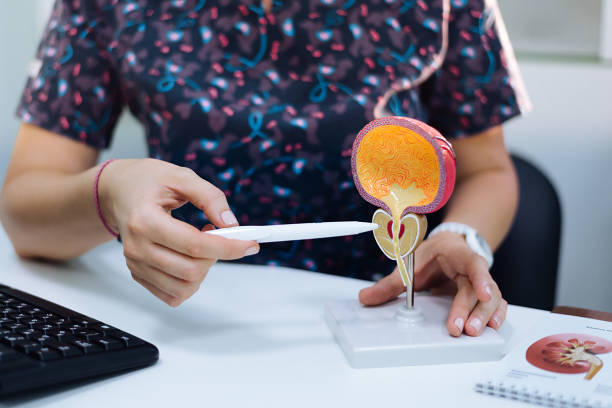Prostate problems can include trouble getting an erection, difficulty with urination, and pain during sex. Some prostate problems are caused by cancer, while others are simply the result of age.
If You are Suffering from prostate enlargement you can take medication, Must Buy ProstaStream.
Common prostate problems include
- Prostatitis—inflammation, or swelling, of the prostate
- Benign prostatic hyperplasia (BPH)—an enlarged prostate due to something other than cancer
- Prostate cancer
The prostate is a small gland located in the male reproductive system.
The prostate is a small gland located in the male reproductive system. It produces seminal fluid, which is necessary for the reproduction of sperm. The prostate also helps to produce semen. If the prostate is not functioning properly, problems can occur with sexual function and overall health.
Common problems with the prostate include: Benign prostatic hyperplasia (BPH), Prostatitis
There are a few common problems with the prostate, including benign prostatic hyperplasia (BPH), Prostatitis, and prostate cancer.
BPH is a problem with the prostate that can cause difficulty urinating. Prostatitis is an infection of the prostate gland, and can lead to increased urinary frequency and urgency. Prostate cancer is the most common type of cancer in men, and it can occur anywhere in the prostate gland.
Prostate cancer
Prostate cancer typically affects men over the age of 50 years. Around 16,000 Australians are diagnosed every year. The cause remains unknown, although advancing age and family history are known to be contributing factors.
In the early stages, the cancer cells are confined to the prostate gland. With the more aggressive types of prostate cancer, cancer cells enter the vascular and lymphatic systems early and spread to other parts of the body where they develop secondary tumours, particularly in the bones.
Prostatitis is An Inflammation Of The Prostate Gland That Can Cause Pain, Burning, And Difficulty Urinating.
Prostatitis is an inflammation of the prostate gland that can cause pain, burning, and difficulty urinating. Prostate cancer is the most common type of cancer in men, but it is also a common cause of prostatitis.
Symptoms of prostatitis include a sense that there is something stuck in the urinary tract, a strong urge to urinate, pain when you urinate, and a low-grade fever.
Although it is most commonly caused by the human papillomavirus (HPV) and other factors such as infection with bacteria or fungi, it can also contribute. Treatment typically involves antibiotics and pain relief medication.
Prostate cancer is the most common cancer in men and is the second leading cause of cancer death in men in the United States.
Prostate cancer is the most common cancer in men and is the second leading cause of cancer death in men in the United States.
It occurs when abnormal cells in the prostate grow and spread. The prostate is a small gland near the rectum that produces semen. The most common type of prostate cancer is called prostate cancer Gleason score 8 or 9.
The American Cancer Society (ACS) estimates that over one million new cases of prostate cancer will be diagnosed in 2017 and that over thousands of men will die from the disease. Treatment for prostate cancer includes surgery, radiation therapy, Medications and chemotherapy.
Treatment for Prostate Cancer
Here are some Treatment Plans for Prostate Cancer:
- The stage and grade of cancer
- Age and health
- Risk category
- Patient values and preferences
- Life expectancy
Treatment choices for prostate cancer involve:
Surveillance
Active surveillance: Monitoring cancer closely by carrying out PSA and DRE examination
Watchful waiting: Relies mainly on the changing symptoms in men
Localized therapy
- Surgery involves the removal of the prostate gland (prostatectomy)
- Radiation therapy
- Cryotherapy is the use of very cold temperatures to freeze and kill the cancerous cells
- Focal therapy
Drug therapies that spread throughout the body to destroy cancer cells involve:
- Hormonal therapy
- Chemotherapy
- Immunotherapy
